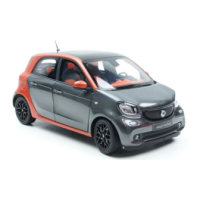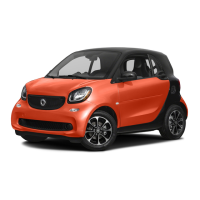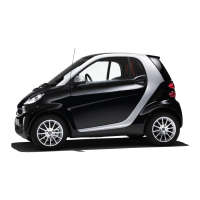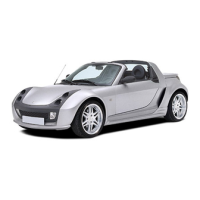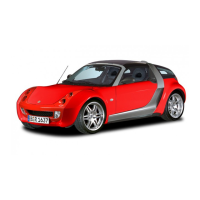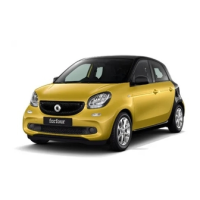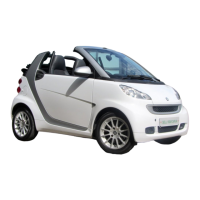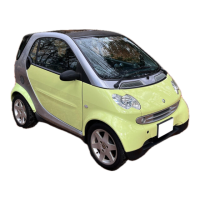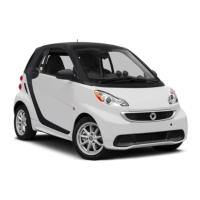X
Stow the tyre sealant bottle and the tyre
inflation compressor.
X
Perform a test drive.
The maximum
permissible speed for a tyre
sealed with tyre sealant is 80 km/h.
X
Stop after driving for approximately 3 km
and check the tyre pressure with the tyre
inflation compressor.
The tyre pressure must now be at least
130 kPa
(1.3 bar/19 psi). The precise values
are located on the door pillar (B-pillar) on
the driver's side.
X
If necessary, adjust the tyre pressure.
X
Unscrew the filler hose from the valve on
the sealed tyre.
Please note that tyre sealant may escape
when unscrewing.
X
Screw the valve cap onto the valve of the
sealed tyre.
X
Pull the tyre sealant bottle out of the tyre
inflation compressor. The filler hose stays
on the tyre sealant bottle.
X
Drive to the nearest qualified specialist
workshop and have the tyre changed there.
X
Have the tyre sealant bottle and filler hose
replaced as soon as possible at a qualified
specialist workshop.
Adjusting the tyre pressure
Increasing the tyre pressure
X
Switch on the tyre inflation compressor.
X
Observe the display.
Reducing the tyre pressure
X
Press button : next
to pressure gauge ;.
i
Even unused tyre sealant loses its effec-
tiveness over time.
Have the tyre sealant bottle replaced every
four years at a qualified specialist work-
shop.
Jump-starting and charging the bat-
tery
Please note
G
WARNING
Work carried out incorrectly on the battery
can lead,
for example, to a short circuit and
thus damage the vehicle electronics. This
can lead to function restrictions applying
to safety-relevant systems, e.g the light-
ing system, the ABS (anti-lock braking
system) or the ESP
®
(Electronic Stability
Program). The operating safety of your
vehicle may be restricted.
You could lose control of the vehicle, for
example:
R
when braking
R
in the event of abrupt steering manoeu-
vres and/or when the vehicle's speed is
not adapted to the road conditions
There is a risk of an accident.
In the event of a short circuit or a similar
incident, contact a qualified specialist
workshop immediately. Do not drive any
further. Always have work on the battery
carried out at a qualified specialist work-
shop.
Further information about ABS (Y page 46)
and ESP
®
(Y page 47).
G
WARNING
During charging and jump-starting,
explosive gases can escape from the bat-
tery. There is a risk of an explosion.
Particularly avoid fire, naked flames, cre-
ating sparks and smoking. Ensure there is
sufficient ventilation while charging and
jump-starting. Do not lean over a battery.
152
Jump-starting and charging the battery
>> Dealing with accidents and breakdowns.

